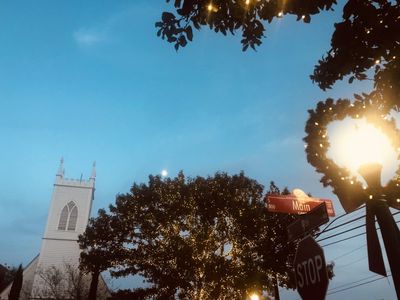Apparently I blinked, because it’s time to start the next school year. This summer has whooshed by, and though it’s been glorious, our rapidly-approaching trip means we’re gathering our books and supplies, doing a ton of research, and easing in to this next year already.
More than a few of you have asked how we’ll be homeschooling on the road—or, worldschooling, more appropriately. I’m happy to share.
There should be a few bits of disclosure before diving head-first into the topic of education from the road:
• Our educational priorities are a bit different this year, seeing as we’ll be stomping around and through the greatest textbook ever (that is, Earth). This, plus living out of backpacks, means we’re taking a very minimalist approach to school. (This fills me with glee.)
• We don’t exactly know what we’re doing here. We’ve never lived out of backpacks for a year while traipsing through almost every continent, oddly enough, so we sorta feel like we’re making this up as we go. There are plenty of people who’ve gone before us—and who are doing this lifestyle, right now, all the time—so we’re not alone. But we’ve certainly never tried it ourselves.
• Our family has a rather unique philosophy about education. Or maybe I should say unique approach. Either way, it’s taken us a few years to really figure out what matters to us… we’re slowly getting there. Basically, we believe:
• That learning is a constant, 24/7 endeavor,
• That educational opportunities can be found everywhere,
• That students are people who educate themselves (sometimes with the help of inspirational teachers or mentors), and
• That the two most significant things we can do as parents is to provide an environment where learning is naturally inevitable, and to model a posture of lifelong learning ourselves.
This can happen anywhere—in traditional classrooms, at home, in the woods, between the covers of a book, on a rickety bus in rural Sri Lanka, or at the table of a restaurant on a Chinese side-street.
So. Yep, our kids will be learning stuff this year. And while the bulk majority of their school supplies involve their passports, eyes, and legs, here’s a few other things we’ll use:
1. Journals, sketchbooks, and pencils
For writing, art, and science, both Tate (age 9.5) and Reed (age 6.5) will keep journals. The oldest kiddo, fourth grade, will write daily entries about our day’s activities, and we’ll help the first grader write a sentence about his favorite moment of the day.
They’ll also sketch the natural world around us and research anything that intrigues them via the Internet, books, and museums, following a Charlotte Mason approach to art and science. Rinse and repeat for one year. (This will also serve as Tate’s Commonplace Book for the year.)
Not only is journaling a simple way to posture ourselves as students of the world, it results in a fantastic souvenir the kids will treasure the rest of their lives.
2. Kindles
For children, I prefer paper books. Even though Kindles are crafted with the idea of mimicking paper and ink as much as possible, I think there’s still something about staring at a screen versus engaging in a real-life book.
However, I can’t deny the sheer practicality of Kindles for travel. A massive library in a lightweight backpack? Yes, please. The kids each have a Paperwhite and they're connected to our local library.
3. Books
At the same time, our Kindles won’t replace thin, lightweight paperback picture books. Reed is massively into early-reader chapter books, but at age 6.5, he still enjoys picture books (Tate does too, for that matter). But at age 4, Finn is at a crucial stage of early literacy. I’m not willing to go sans books for nearly a year at his age.
We’ll carry just a few beloved paperbacks and read them frequently, perhaps trading them in for new books as we come across used English bookstores (we know of at least one in Thailand, so I don’t doubt we’ll come across more). Certain cities also have libraries with books in English, and we’ll use them if we plan to be in town longer than a few weeks.
4. iPad
We have one iPad for the family which serves primarily for education, secondarily for work, and lastly for entertainment. Again, I’m not big on screens, but the power and compactness of a tablet for on-the-go education can’t be denied.
Our iPad is a portal for exercising the brain with math, typing, foreign language, and more. It doesn’t replace real life, no doubt—but used efficiently and intentionally, it certainly helps reinforce ideas.
Here are some of my favorite apps…
• Math: Splash Math and Khan Academy as our main resources, with Math Bingo, Sushi Monster, and Geoboard for enrichment.
• Foreign language: Duolingo (Tate’s learning Spanish, I’m slowly working through French), and Bilingual Child in Spanish for Reed.
• Language Arts: Spelling City—I love that I can create our own spelling lists (and it’s free!), Logic of English’s Phonograms, Wet Dry Try for handwriting practice, and Articulation Station (Reed has a speech delay).
• Reading: Audible and Librivox for audiobooks, Free Books for occasional reading of books in the public domain, iBooks to hold any PDFs or digital teacher’s manuals (for my use, mostly).
• History: This Day in History for a quick snapshot of events of the day; Timeline Builder for building a timeline as we learn important events—this last one is clunky, but I’ve yet to find a better timeline app (and I’ve looked). Also, this doesn’t include random apps we’ll use here and there for specific locations (several art museums have good guide apps, for example).
• Faith: The Bible by YouVersion, BibleMinded for help in memory work, Common Prayer.
• Other: TapTyping for typing, Merriam-Webster for a dictionary and thesaurus, Classic Board for a digital chalkboard, Wikipedia for reference, YouTube for watching stuff.
5. Miniature whiteboards and dry erase markers
I love the little lap-sized whiteboards from the dollar section at Target (similar to these). We have one for each kid, great for both free-drawing and for parent-led teaching activities, such as grammar exercises, sentence diagramming, handwriting practice, and math problems. They’re the modern-day version of old-school slates.
6. Handwriting book and preschool workbook
Reed uses Handwriting Without Tears quite successfully, so we’ll bring his level of workbook with us so he can naturally progress at this skill. And because Finn feels left out whenever his big brother works on his handwriting, we’ll also bring a simple preschool workbook he can dink with whenever it strikes his fancy. Along with a blank sketchbook and crayons.
7. Uno and dice
Not only is it an all-ages game, Uno cards are great for math games—big numbers in four colors (for sorting) mean endless variations of skill drill (multiplication, sequencing, etc.). Same with a set of dice.
8. Pocket map
I bought a simple laminated map to toss in my bag — it’s nothing fancy, but it’s large enough to have the basic major countries and their capitals labeled. We’ll use this to review wherever we are.
9. Story of the World
This four-volume audiobook remains one of my favorite educational tools ever—not just for travel, and not just for homeschooling families. From ancient through modern times, this is history told in story form. We prefer the audio versions, which I spent a weekend converting to mp3. They’re all housed in our iTunes account, ready for instant play on our iPad.
Typically I’m a big believer in learning history chronologically, but we’d be silly to skip the history of wherever we are in the name of chronology. So we’ll keep working through the end of volume two and into volume three, but if we happen to be somewhere significant, of course, we’ll skip ahead (or go back in time) to whichever story covers that locale.
We all listen to these stories together—even the adults learn with this anthology.
10. Museums, historical sites, natural wonders, and people
Last but certainly not least, we’ll take advantage of any offerings our travels take us. Panda preserves in China, planetary observatories in the southern hemisphere, rainforests, zoos, archaeological dig sites, safaris, local crafting lessons, climbing historical sites, walking ancient streets… Honestly, if we spent the majority of our time focused on these things, we’d be golden.
There’s also the sheer act of trip planning that provides a solid education: money exchange rates, flight times, learning the basics of different languages, reading signs and maps, packing, using metro and bus systems… it’s endless.
Ultimately, we hope to live out our conviction that learning can happen anytime, anywhere, from almost anything. Writing, reading, and math will comprise the bulk of any “formal” education, with everything else providing opportunities to build on those skills.
Honestly, our kids’ education is near the top of my list of reasons to get excited about this trip. I can’t even imagine how this would have shaped my own childhood—even if the kids aren’t exactly cognizant of how extraordinary this upcoming year will be, their parents are. And we’ll make the most of every opportunity.
(A few affiliate links are used.)



